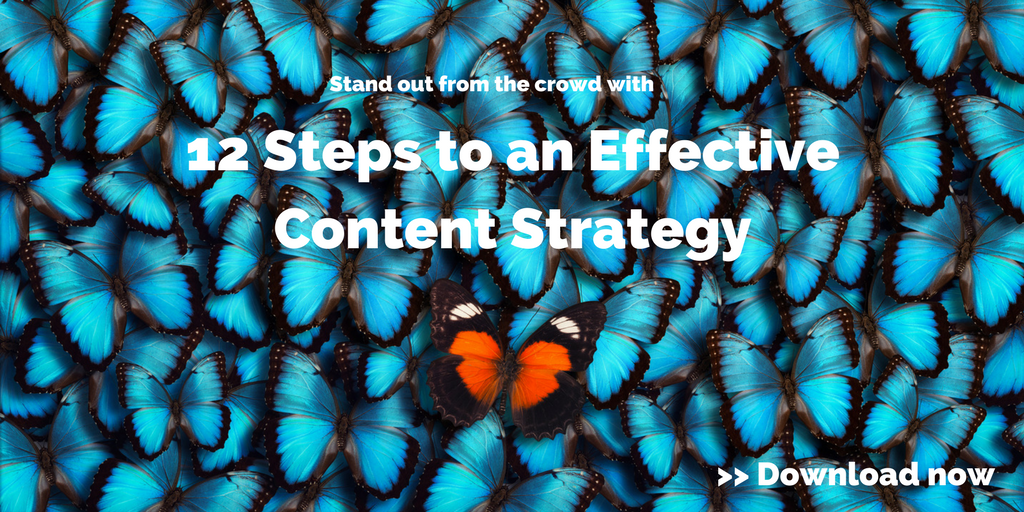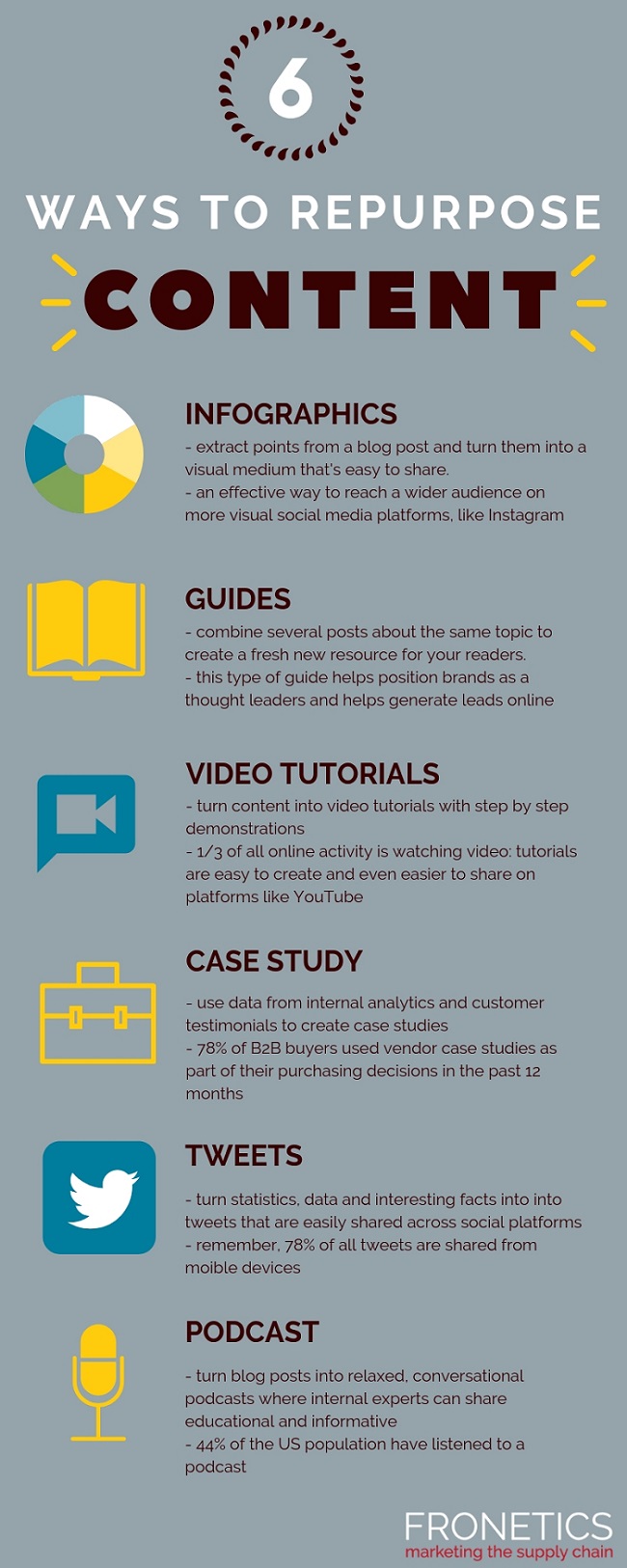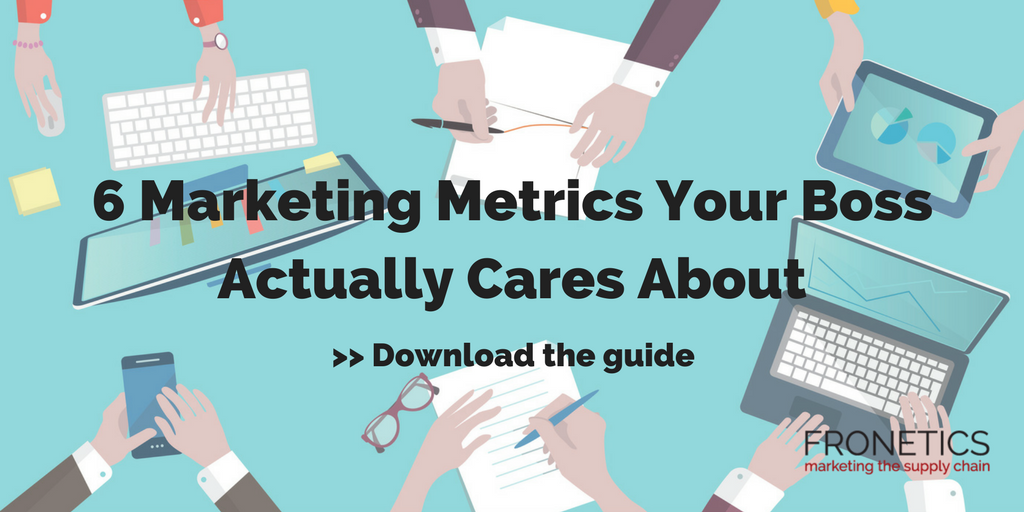
by Fronetics | Sep 5, 2019 | Blog, Logistics, Marketing, Social Media, Supply Chain
Instagram Stories offers paid advertising delivering targeted content to B2B buyers and building brand awareness with potential customers.
Highlights:
- As the number of people using stories has grown, so has the number of businesses using the format to connect with their audiences on social media.
- As more people browse Stories, you can show your ad to the maximum number of people possible using this format.
- You can get more eyes on your video content by posting videos on Instagram Stories.
Video transcript:
I’m Elizabeth Hines from Fronetics and today’s topic is paid advertisements on Instagram Stories.
Instagram Stories are the latest social media trend. As the number of people using stories has grown, so has the number of businesses using the format to connect with their audiences on social media.
Story ads represent an alternative to News Feed ads, which, though still effective, had lost a bit of novelty. Here are 3 reasons to start using Instagram Story ads:
1) Brand reach: As more people browse Stories, you can show your ad to the maximum number of people possible using this format.
2) Traffic and conversions: Send more people to your website, where they can convert to a lead.
3) Video views: Stories are a great platform for video. You can get more eyes on your video content by using it in this channel.
The rise in popularity of Instagram Story Ads tells an interesting, ahem…story. People are interacting more and more meaningfully with brands on their mobile devices and they increasingly want to do so in a format that is easy, convenient, and engaging.
If you want help setting up your Instagram Ads, visit us at fronetics.com to learn more.
Related posts:


by Fronetics | Dec 4, 2018 | Blog, Content Marketing, Logistics, Marketing, Strategy, Supply Chain
Repurposing content is an efficient way to reach a broader audience and build brand awareness.
You spent hours pouring over stats and interesting facts for a blog post. Don’t let all of that effort fall to the wayside. Breathe new life — and reach new audiences — by repurposing that content into engaging new formats.
Some social users like video, while others prefer pictures or podcasts. Taking content and changing its original format is just smart business. Repurposing high-quality content saves marketers time and money and helps to reach a broader audience.
Be picky
Not all of your blog posts and content get the same attention, and that’s ok. Some pieces will resonate more, increasing engagement and driving website traffic.
Run analytics on your content and see what pieces have performed the best. Use tools like Google Analytics to determine your most popular blog posts, your most engaged tweets, or your most viewed videos. This data will help you decide which content should be repurposed. The idea is to take one piece of content and gain visibility and expand your audience by turning it into multiple pieces of content.
The Rule of 7
Repurposing content isn’t just about cutting and pasting content. Have you heard of the Rule of 7? The Rule of 7 is a marketing principle that states your prospects need to encounter your content seven times before they take notice. That’s right, seven times.
[bctt tweet=”The Rule of 7 is a marketing principle that states your prospects need to encounter your content seven times before they take notice. That’s right, seven times.” username=”Fronetics”]
Repurposing content is a great way to take high-quality content and continue to get it in front of audiences without seeming redundant. HubSpot reports that brands who blog around 16 times or more per month get 3.5 times more traffic and 4.5 times more leads than businesses that blog fewer than four times a month. Frequency clearly gets results, but it can also be incredibly time-consuming to create new content 16 times every month. Repurposed content can help your marketing team increase frequency while focusing on quality.
Infographic: 6 ways to repurpose content

(Made with Canva)
Takeaway
How much value does your company put on content? It may be even more important than you think. Use these tips to repurpose high-quality content or yet better, start creating content with these tips in mind. Thinking about a topic and how you can turn that topic into multiple pieces of content will help your hard work go further and perform better.
Related posts:


by Fronetics | Jul 10, 2018 | Blog, Content Marketing, Logistics, Marketing, Social Media, Strategy, Supply Chain
As with many things, blogs improve with age — drawing more traffic, generating more leads, and building more credibility with search engines.
The average lifespan of a tweet is around 15 minutes. And a Facebook post’s lifespan is about 6 hours. But the lifespan of a blog post averages two years. TWO YEARS.
[bctt tweet=”80% of our website traffic comes from blog posts that are over six months old. HubSpot discovered a similar trend: 76% of its monthly views came from old posts, as well as 92% of the company’s monthly leads!” username=”Fronetics”]
In fact, we find that 80% of our website traffic comes from blog posts that are over six months old. HubSpot discovered a similar trend: 76% of its monthly views came from old posts, as well as 92% of the company’s monthly leads!
Why is that? Because, as with many things, blog posts improve with age. Search engines give value to older content that has had more time to accumulate social shares, likes, and referrals from other web pages. The more relevant a blog post proves itself to be to readers over time, the higher it will rank in search engine results.
Optimizing older content
Blog posts also give marketers an opportunity to dust off older content and rework it to be relevant and up-to-date to target audiences. Using analytics tools, marketers can track posts that had high traffic and conversion rates and work on optimizing the content. Updating older posts with new statistics, relevant keywords, and spruced-up calls-to-action will breathe new life into your older content.
Lead-generation tool: your blog
A blog is an excellent lead-generation tool. But, as I’ve written before, it takes time to generate leads and sales. Patience is a virtue, but it’s a particularly difficult one to keep in mind when you’re trying to grow business and keep your boss happy.
Your posts need time to start drawing traffic — and then, from traffic comes leads. Here’s why blog posts, like a fine wine, will continue to improve with age and why you shouldn’t give up on your efforts.
Video: Why blogs improve with age
Takeaway
With high-quality, relevant content, your blog will pay off. You should keep tending to your already published content, particularly those posts that prove to be a consistent source of traffic.
Update information; add links to new related posts or other relevant resources; and seek opportunities to insert or update calls-to-action to current offers and campaigns. Making sure those older, consistently popular posts continue to serve and engage your readers will increase your chances of conversion.
And, don’t forget: Something that doesn’t get a lot of views in the first week may be a huge traffic source and lead converter in a little time. Many content management systems, like HubSpot, can generate attribution reports, which tell you which web pages users most often visit before converting to a lead. Compare these pages with your high-traffic pages that don’t make the list to see how you can create more opportunities for lead conversion on the pages earning the most traffic.
Related posts:


by Fronetics | May 22, 2018 | Blog, Content Marketing, Logistics, Marketing, Supply Chain
If you don’t give visitors many easy, attractive opportunities to convert on your website, content marketing won’t generate leads for you.
I’ve been noticing a trend lately that I wanted to share.
We talk with a lot of supply chain and logistics companies who are interested in the idea of content marketing. They’re catching on to the benefits, particular those involving lead generation. They know that creating high-quality, original content on a regular basis — mostly, timely blog posts on a weekly (or more frequent) basis — can drive organic traffic to their websites. And a lot of that traffic will be marketing- or sales-qualified leads.
[bctt tweet=”Content marketing won’t generate leads if you’re driving visitors to a website that stinks.” username=”Fronetics”]
That’s great! I’m glad supply chain and logistics companies are increasingly interested in content marketing. But there’s one problem: Some aren’t willing to take a holistic approach to this solution. Mostly, they aren’t willing to improve their websites.
I totally get it: Websites are a major investment — both financially and temporally. But so is content marketing. And you would be wasting a lot of time and money investing in a content marketing program if all the leads you’re going to drive to your website don’t convert or end up with mixed messaging about your business.
When content marketing won’t generate leads
Content marketing won’t generate leads if you’re driving visitors to a website that stinks. How do you know if your website stinks? Here are a few examples:
Your content is disorganized, unclear, or filled with jargon.
I see this most often. Companies create websites without considering a larger content strategy. Their company or products/services have evolved over time, but the website has not evolved with it (or someone quickly threw up a couple of extra pages without considering the site map as a whole). And, worst of all, web pages become filled with jargon and corporate speak because companies don’t take the time to strategize web page creation as part of that larger content strategy.
Messaging on your website pages serves internal purposes rather than helping customers.
So many businesses create their websites and fill pages with information about their company. “Wait, isn’t that what a website is for?” you might be asking.
No, I would argue. Your website, like your content, should service the customer first. You should design it with the user in mind, helping that prospect find the information they’re seeking and move seamlessly down the sales funnel.
Sure, you should include information about your company on your website. But too many times I see organizations forget about their customers in the creation of their sites. And when prospects visit, they’re caught in a web of the company’s self-promotion — an no closer to making a purchase than before.
There are no opportunities for conversion.
This one seems obvious. But, for some reason, companies frequently create websites hoping to generate leads but give visitors few (or hidden!) opportunities for conversion. If each page doesn’t have a clear call-to-action, specific to the page’s content, with the opportunity to submit contact information, how do you suppose visitors are going to become leads? I’ll say from experience, very few, if any, will proactively reach out and ask to join your email list.
Get it together
If you’re going to make the significant investment in content marketing — and lead generation is your primary goal — you have to think about your website, too. Otherwise, the traffic you’re driving to your site will never convert. And you’ll have wasted your time and money.
Want to make your website an effective lead-generating machine? Stay tuned for part 2 of this post tomorrow: 5 Tips to Generate More Leads on Your Website.
Related posts:


by Fronetics | Mar 15, 2018 | Blog, Content Marketing, Logistics, Marketing, Strategy, Supply Chain
Here are four simple steps to help you measure your company’s content marketing ROI and the success of your strategy.
Lean-startup pioneer Eric Ries said, “The only metrics that entrepreneurs should invest energy in collecting are those that help them make decisions.” In other words, measure the things that will tell you if an effort was profitable so you know where to put your time and money.
But most companies aren’t using the right metrics to track their content marketing ROI. For example, 83% of B2B enterprise companies (over 1,000 employees) use web traffic as their main metric for measuring content marketing ROI. A spike in homepage hits could be the result of your hard work, but it could also be ghost spam, or even both! So clearly, web traffic isn’t the most reliable metric.
Content marketing ROI is harder to quantify than checking a few quick numbers. But don’t give up hope. In the article How to Measure Content Marketing ROI: A Simple 4 Step Process, marketing consultant Bill Widmer breaks down a simple, four-step process that will quickly and effectively measure your content marketing ROI.
What is content marketing ROI?
Content marketing ROI is how much revenue you gain from content marketing in comparison with what you spend on creating and distributing content. It’s an actual percentage that shows how much revenue you gained vs. how much money you spent. And for a lot of businesses (and bosses), this percentage is very important. They want you to be able to prove that the marketing dollars that are going into your content marketing strategy are actually pulling in new business.
Every company has specific key performance indicators (KPIs) that help shape their marketing strategies. Here at Fronetics, we believe that your content marketing strategy should take these KPIs into consideration when thinking about your ROI:
- Website traffic
- Leads generated
- Conversion rate
- Direct sales
Obviously content marketing has more benefits than these four KPIs demonstrate — including better customer retention, brand awareness, and improved SEO — but to begin to measure your ROI, let’s focus on these four main points.
Measure content marketing ROI in 4 simple steps
1. Download your reverse goal path data.
Andy Crestodina, co-founder and CMO of Orbit Media, suggests:
- Go to your analytics dashboard. Set the date range for at least a year.
- Go to Conversions > Goals > Reverse Goal Path.
- Add a filter like “/blog” so only blog posts show up.
- Sort by Goal Completions.
After this step, you’ll be able see which of your posts have driven the most conversions. But you can’t stop there. These are simply conversion numbers. We want those numbers to become conversion rates, so let’s keep going.
2. Download your pageview data.
In order to calculate a conversion rate, you need to know pageviews. Here’s how to get that information:
- Go to Content > Site Content > All Pages.
- Filter with “/blog” to get only blog posts.
Download this data into the spreadsheet from step one.
3. Get your conversion rate.
Now here’s a little math for you. Divide the data in the “conversions” column by the number in the “unique pageviews” column. This will give you your conversion rate per blog post.
This will show you what your best-performing pieces of content are, and what posts need to be updated to gain more views and shares.
This information will give you valuable insight into the topics that your target audience are reading about and how you can better plan for high-ranking content in the future.
If you have posts or pages that are older — like over a year — and they haven’t gotten any views or conversions, it’s time to think about reworking them to have more appeal to your target audience.
For your actual percentage, you’ll need to calculate how many of these leads have converted to sales.
4. Calculate content marketing ROI based on lead conversions.
Here’s where things get a little more complicated, but still very manageable. You need to start putting tags on your leads according to the content they came from.
You can use programs like WordPress or Blogger to help you automatically tag any leads that came from a specific form. Assuming the form correlates to a single blog post, you will know that any leads with that tag came from that post.
You can also connect your leads with a CRM, such as HubSpot or SalesForce, and track which leads came from specific emails. These programs easily integrate with your analytics and email marketing platforms for up-to-date numbers and data.
Related posts:










